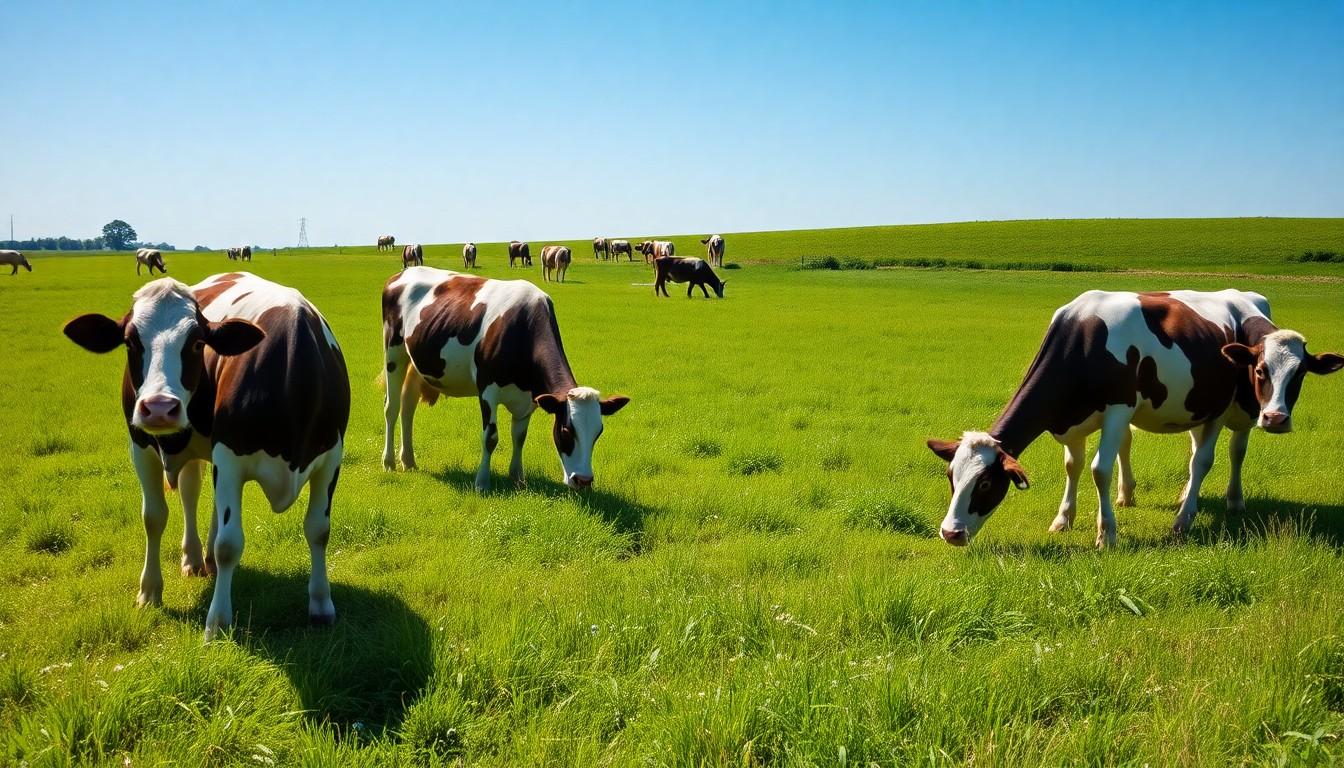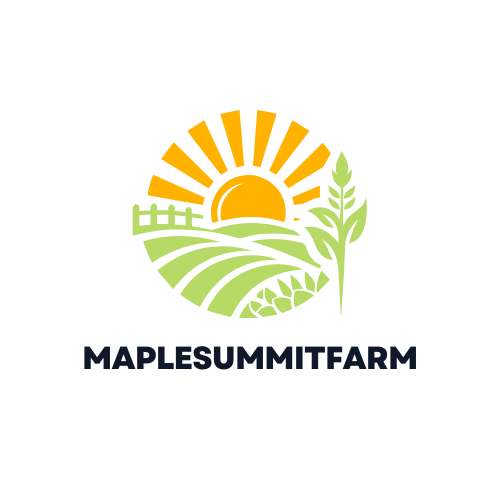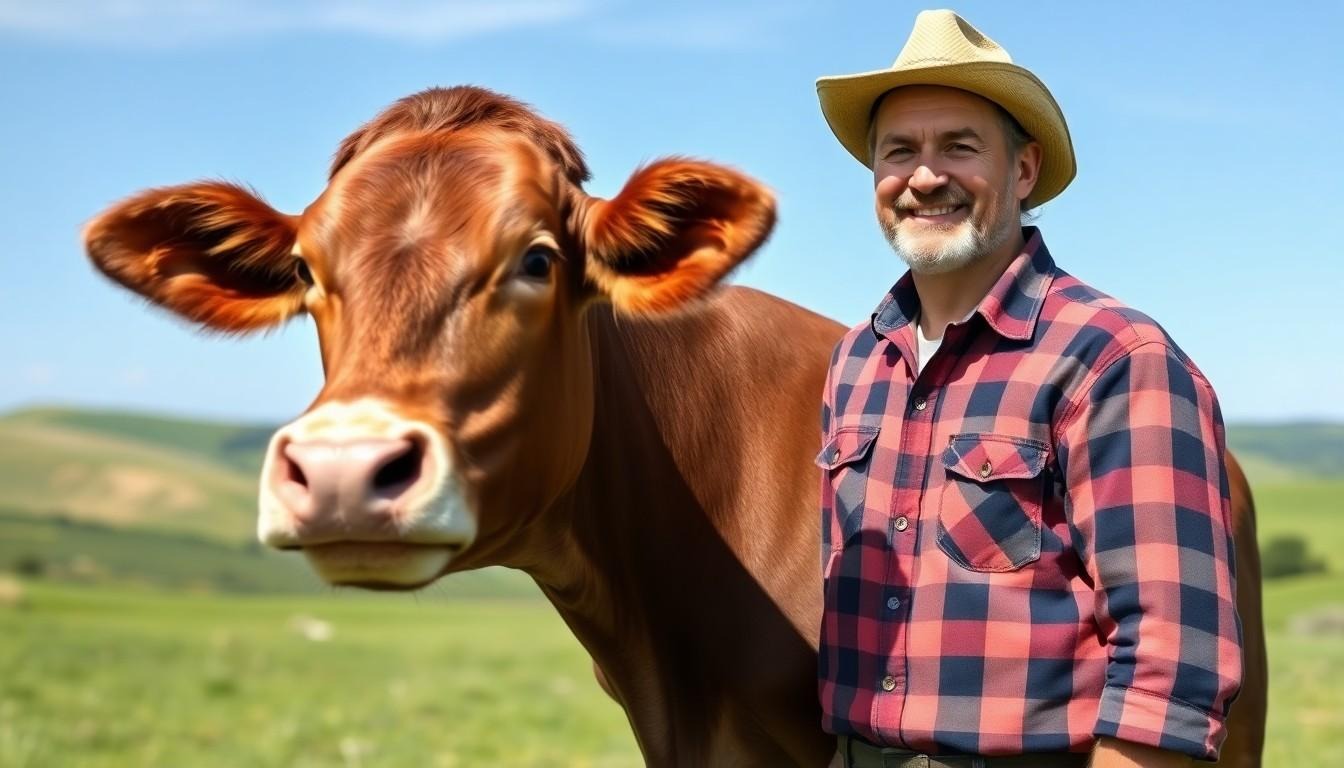In a world where the grass is always greener on the sustainable side, dairy farming is moo-ving towards a brighter future. Imagine a farm where cows graze happily, producing milk that’s not just good for you but also kind to the planet. Sustainable dairy farming isn’t just a trend; it’s a revolution that promises to reduce environmental impact while keeping our favorite dairy delights on the table.
Sustainable Dairy Farming
Sustainable dairy farming encompasses practices aimed at minimizing environmental impact while ensuring high-quality dairy production. Emphasis lies on animal welfare, resource efficiency, and biodiversity preservation. Farmers employ rotational grazing, which allows pastures to regenerate and reduces soil erosion.
Water conservation plays a crucial role in sustainable practices. Efficient irrigation systems and recycling wastewater help maintain water resources. In nutrient management, proper application of fertilizers prevents runoff into water bodies. Healthy soil improves crop yields, benefiting both livestock and dairy production.
Integration of technology enhances sustainability in dairy farms. Precision farming techniques, like soil sensors and monitoring systems, optimize feed use and minimize waste. Data-driven decisions support better animal health and production rates, leading to lower resource consumption.
Local feed sourcing contributes to reduced carbon footprints. By utilizing regional feed ingredients, transportation emissions decrease, fostering a more sustainable supply chain. Moreover, manure management systems convert waste into valuable resources, such as compost or biogas.
Markets increasingly favor sustainably produced dairy products. Consumer demand for transparency and environmental responsibility drives dairy producers to adopt innovative practices. Certification programs, including organic standards, validate the commitment to sustainability.
Sustainable dairy farming not only benefits the environment but also supports rural communities. Economic viability through sustainable practices fosters resilience in the dairy sector. As dairy farmers strive to balance productivity and ecological stewardship, the industry moves toward a more sustainable future.
Environmental Impact

Sustainable dairy farming significantly influences the environment through improved practices. Focus on soil health and water management boosts overall sustainability.
Soil Health
Healthy soil serves as a foundation for sustainable dairy farming. Practices such as rotational grazing renew pastures, preventing erosion and enhancing soil structure. Organic matter increases fertility, fostering plant growth and nutrient retention. Techniques like cover cropping also protect soil from runoff and degradation, improving biodiversity. Improved soil health leads to better crop yields, which reduces reliance on chemical fertilizers. Farmers engaging in these practices contribute to a balanced ecosystem, benefiting both the land and animal welfare.
Water Management
Efficient water management reflects a key component of sustainable dairy farming. Technologies, such as precision irrigation, minimize water use while maximizing crop efficiency. Excessive water usage gets curtailed through practices like rainwater harvesting and wastewater recycling. These measures not only conserve this vital resource but also reduce costs for farmers. Maintaining clean water sources supports animal health, essential for dairy production. Properly managed water systems also help prevent nutrient runoff, which protects local waterways and ecosystems. Overall, effective water management strategies contribute to long-term sustainability in dairy farming.
Animal Welfare Practices
Sustainable dairy farming prioritizes animal welfare to ensure healthy, productive livestock. Emphasizing humane treatment fosters both animal well-being and quality dairy production.
Pasture-Based Systems
Pasture-based systems provide cows with a natural environment that promotes good health. Cows grazing on diverse pastures enhance their diets while improving soil quality. Utilizing these systems helps manage land sustainably, improving carbon sequestration and reducing feed costs. Research has shown that animals raised on pasture exhibit lower stress levels, leading to better overall productivity. Additionally, well-managed grazing contributes to biodiversity by supporting various plant and animal species.
Health and Nutrition
Health and nutrition play crucial roles in dairy animal welfare. Providing balanced diets rich in essential nutrients leads to improved milk quality and yields. Utilizing supplements like omega-3 fatty acids supports cow health and enhances the nutritional content of dairy products. Incorporating frequent veterinary care ensures that livestock receive necessary vaccinations and health checks. Furthermore, monitoring animal conditions allows for timely interventions, promoting a higher standard of care. By focusing on these aspects, dairy farms can achieve healthier animals, which in turn supports sustainable production practices.
Economic Benefits
Sustainable dairy farming presents significant economic advantages for producers and the industry. Cost efficiency and market demand stand out as two primary elements driving this shift.
Cost Efficiency
Efficient resource use lowers overall expenses for dairy farms. Innovative practices reduce feed costs by optimizing nutritional value, while technologies enhance crop yields through targeted fertilization. Transitioning to renewable energy sources, such as solar or wind power, further decreases energy expenses. Waste management systems transform manure into biogas, generating additional income streams. These strategies not only save money but also improve profit margins, allowing farmers to reinvest in their operations.
Market Demand
Consumer preference increasingly leans toward sustainably produced dairy products. Retailers and food companies recognize this trend, often prioritizing suppliers committed to environmental responsibility. Certifications, like organic or animal welfare-focused labels, boost product value in competitive markets. Higher prices for sustainably sourced dairy can enhance farm income, while meeting consumer expectations strengthens brand loyalty. Engaging with this growing market not only supports profitability but also fosters long-term sustainability in the dairy sector.
Innovative Practices in Sustainable Dairy Farming
Sustainable dairy farming employs innovative practices that enhance productivity while minimizing environmental impact. This section delves into two major areas: technology integration and community involvement.
Technology Integration
Precision farming enhances sustainability through optimized feed management. Advanced data analytics helps farmers track animal health and productivity, ensuring timely interventions. Use of sensors monitors soil moisture, which informs irrigation decisions to conserve water. Automated feeding systems reduce waste by delivering precise amounts of nutrition based on individual cow needs. Drone technology facilitates pasture monitoring, improving land management and maximizing grazing efficiency. Moreover, renewable energy sources like solar panels power operations, decreasing reliance on fossil fuels. Effective waste management systems transform manure into energy, creating a closed-loop system that benefits both the farm and the environment.
Community Involvement
Community engagement plays a crucial role in sustainable dairy farming. Local partnerships foster knowledge sharing and support collaborative initiatives aimed at promoting environmental stewardship. Farmers often participate in education programs, raising awareness about sustainable practices within the community. Establishing farmer cooperatives encourages resource sharing and collective purchasing, reducing costs and enhancing efficiency. Additionally, involving consumers in farm tours creates transparency and builds trust, reinforcing the connection between producers and consumers. Emphasis on local sourcing not only supports community economics but also reduces the carbon footprint of dairy products significantly. Engaging with students through educational programs inspires future generations, ensuring continued commitment to sustainable practices in dairy farming.

